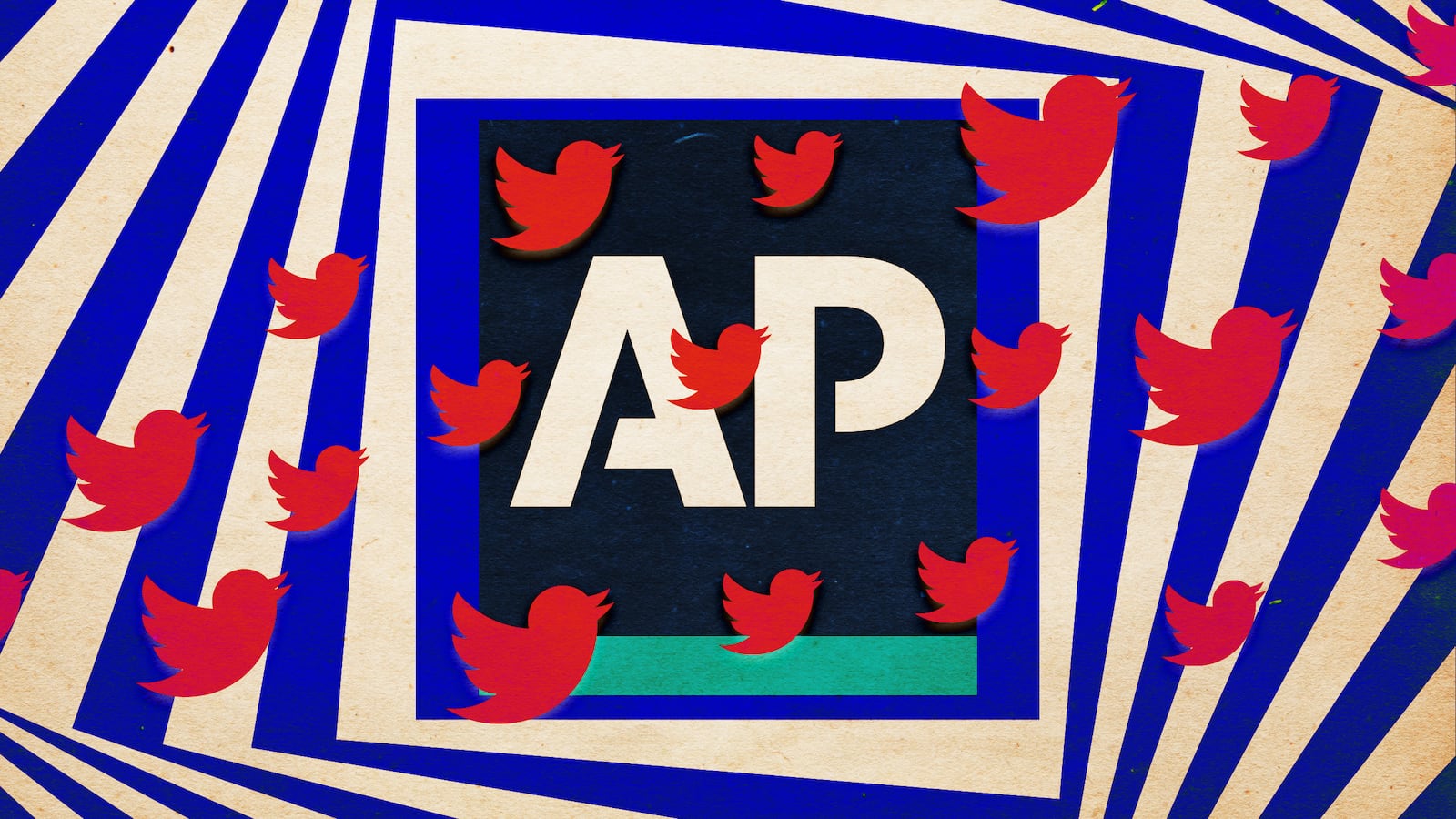During the Trump era, the Associated Press, the nation’s biggest and most important newswire service, has gone to great lengths to enforce the appearance of objectivity from its reporters.
Meanwhile, its own Twitter feed has become the subject of widespread mockery for its frequently tone-deaf and equivocating posts that often read like a caricature of “both sides” journalism.
On Tuesday evening, following Trump’s Oval Office address, the AP’s fact-checkers wrote on Twitter: “Democrats put the blame for the shutdown on Trump. But it takes two to tango. Trump’s demand for $5.7 billion for his border wall is one reason for the budget impasse. The Democrats refusal to approve the money is another.”
The tweet was quickly admonished by partisans and media critics, who bashed the newswire for allowing its painstakingly curated “objective” point of view to cloud the fact that Trump himself has repeatedly declared the government shutdown to have been his goal.
Washington Post media critic Erik Wemple pointed out that because the AP is licensed by so many different news organizations across the country, there is a major business incentive for the publication to maintain the appearance of neutrality.
However, he noted, the rigorously non-ideological model of journalism that has dominated the national media landscape over the past several decades has failed under Trump because it forces outlets into false equivalencies that are neither accurate nor truthful.
“Trump has exposed what a crock this idea has been—that somehow everyone we send to Washington is equally corrupt,” Wemple said. “The problem is it fails to capture degrees, and it fails to capture the lies and utter incompetence of this presidency. So it’s totally fitting that this model would hit a crisis stage under Trump.”
On Wednesday, the AP said, “The tweet was intended to make clear that both Trump and Democrats have failed to find common ground in their disagreements, but it could have done a better job of explaining the dynamics that have led to the shutdown. The complete AP Fact Check was robust and focused almost exclusively on Trump’s comments.”
That wasn’t the first time in recent months that the wire service’s Twitter has been the target of outrage for uncritically amplifying President Trump’s unverified claims and dangerous rhetoric, or equivocating on partisan issues despite all available evidence.
And although its Twitter feed remains a constant subject of media criticism in the Trump era, the Associated Press has seemingly been more concerned with the perceived objectivity of its individual staffers.
In a January 2018 email obtained by The Daily Beast, the AP’s Washington bureau chief Julie Pace expressed concerns about reporters’ tweets appearing to suggest political bias against Trump and his administration.
“Everyone in the bureau has an obligation to be even-handed when tweeting about the government and the president,” she wrote. “There are countless readers and political operatives always on the lookout for signs of bias. Your posture on social media is just as important as the stories on the wire. Particularly given the number of sensitive topics this bureau is reporting about these days, I’d ask you all to be extra cautious going forward.”
Several days later, the company’s VP of standards, John Daniszewski, reminded staff that while Twitter could be “fun and engaging to be part of this global zeitgeist,” the social network was not “a place for AP employees to join in the debates or even the reactions.”
“AP employees are not allowed to applaud, cheer or mock a politician’s tweet or a public figure’s speech, no matter how moving. Our job is to cover news,” Daniszewski said. “Any expression of opinion that calls into question the AP’s commitment to do its job objectively and fairly undermines the hard-fought credibility of our reporting—both to our sources and to our audience.”
The email continued: “Even when tempted to resend a tweet or photo that is witty and amusing, ask, is this tweet expressing a point of view?”
It is common practice for mainstream news outlets to advise their staffers to avoid appearing partisan on social media. But the sheer volume of patently false statements from President Trump has challenged news outlets to skeptically deliver his newsworthy comments without appearing overtly partisan. Cable networks like CNN, for example, have begun to skeptically present Trump’s comments alongside chyrons correcting him or providing much-needed context.
But for the AP, such fervent enforcement of objectivity has seemingly taken priority over concerns about the outlet’s account constantly getting into trouble.
Since Trump took office, the Associated Press has repeatedly been forced to delete tweets quoting the president’s statements because they were factually incorrect, didn’t meet the company’s reporting standards, or “lacked context.”
As left-leaning news and opinion site Splinter pointed out last year, the AP’s Twitter account regularly and uncritically acts as a stenographer for Trump’s statements, regardless of whether his claims are deeply paranoid, unsupported by facts, or outright propagandistic.
In Oct. 2018, the AP stoked widespread outrage over a tweet parroting Trumpian xenophobic language about the migrant caravan then headed towards the U.S. border. “We’ve removed an @AP tweet from Oct. 21 that said a migrant caravan in Mexico was ‘like a ragtag army of the poor,’” read the outlet’s surreal correction. “That wording was poorly chosen and has been removed from our coverage of the caravan.”
Further responding to criticism, AP social editor Eric Carvin explained that such words “weren’t chosen ‘politically,’” but “we always need to take great care in our choice of words.”
In early December, the AP deleted a factual assessment of the late George H.W. Bush’s presidency after conservatives admonished the outlet for perceived bias.
The offending tweet read: “George H.W. Bush, a patrician New Englander whose presidency soared with the coalition victory over Iraq in Kuwait, but then plummeted in the throes of a weak economy that led voters to turn him out of office after a single term, has died. He was 94.”
And the AP’s clumsy apology tweet explained: “We’ve deleted a tweet and revised a story on the death of President George H.W. Bush because the tweet and the opening of the story referenced his 1992 electoral defeat and omitted his WWII service.”
Other times, the outlet’s Twitter feed reads as astoundingly out of touch. For example, when Rep. Alexandria Ocasio-Cortez (D-NY) unseated Rep. Joe Crowley in a highly covered Democratic primary, the AP tweeted the news without including her name, instead referring to Ocasio-Cortez solely as a “young challenger.”
One person familiar with the AP’s internal process told The Daily Beast that its tweets are not normally drafted by just one person.
In recent months, AP editorial higher-ups have reviewed best practices with staffers who have access to the company's Twitter accounts. The AP also instituted a policy requiring two staffers to review tweets before they are posted.
Politics staff cycle through the Washington newsdesk and are often expected to draft tweets along with other duties. As is the case at many news outlets, reporters themselves—who often are the most familiar with the subject area—are often not writing the tweets selling their articles.
The Daily Beast reached out to the Associated Press last year asking why the organization has been forced to delete, correct, or clarify so many tweets. In a statement late last year, a spokesperson said the outlet deletes or corrects tweets for maximum clarity.
“AP’s news values require accurate, fair and unbiased reporting on every platform,” the spokesperson said. “When a mistake is made, we correct it and are transparent about doing so.”






